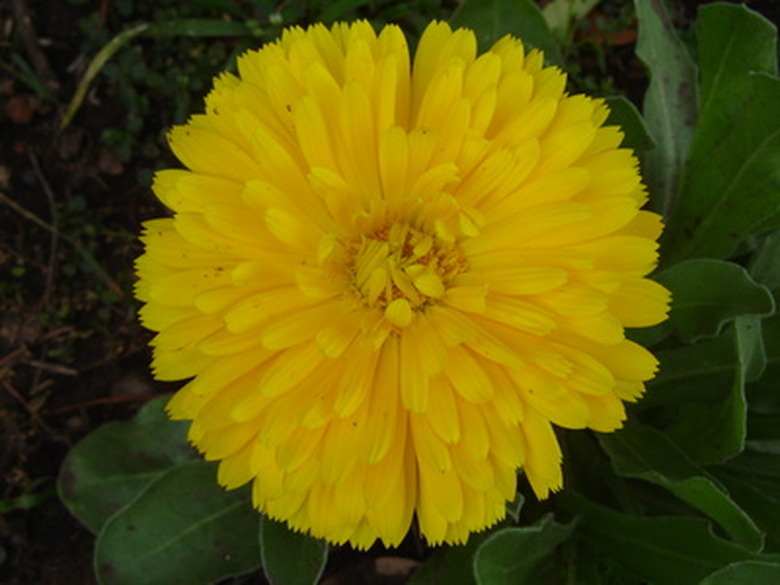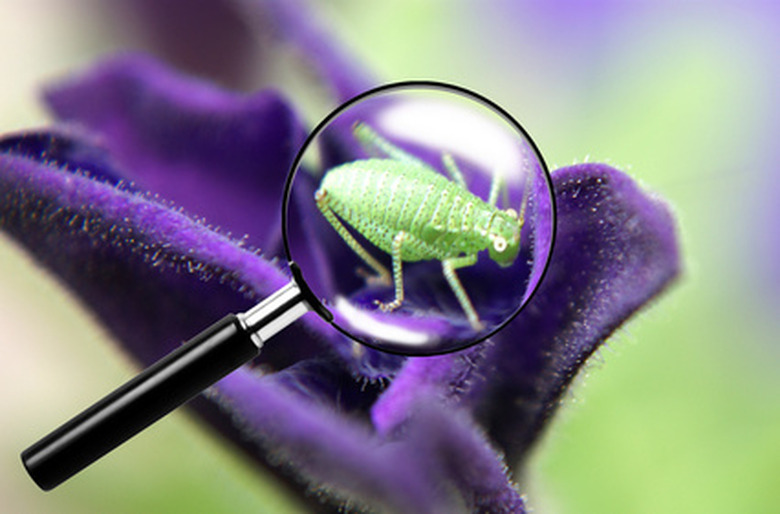Insects That Attack Calendula
While calendula plants add color to your garden and attract beneficial insects, there are also those insects that attack calendula. When gardening with calendula, understanding which insects act as pests will help you keep your garden in good shape. Prevent injured plants and the creation of extra work by identifying pests and their symptoms.
Aphids
Aphids (Aphis spp.) are small insect pests that attack calendula. Measuring less than 1/8 inch long, aphids have soft, pear-shaped bodies with long legs and long antennae, according to the University of Connecticut's Integrated Pest Management. Aphids attack calendula by inserting their stylet-like mouths into the plant to feed; when aphids feed, a sap-like "honeydew" comes out of the plant, promoting fungal growth which may later inhibit photosynthesis and stunt the calendula's growth. Additionally, aphids transmit a number of viruses when feeding on calendulas which can cause distorted features and diminished health. One option for control of aphids is to use enemies; utilizing natural predators such as ladybird beetles, lacewings, syrphid flies, and small parasitic wasps may provide management.
- While calendula plants add color to your garden and attract beneficial insects, there are also those insects that attack calendula.
- Additionally, aphids transmit a number of viruses when feeding on calendulas which can cause distorted features and diminished health.
Whiteflies
Whiteflies (Trialeurodes vaporariorum, Bemisia spp.) are a variety of insects that attack calendula. Whiteflies are tiny white moth-like insects in their adult stage; they secrete small particles of wax, causing them to display a mealy appearance. According to the Connecticut Agricultural Experiment Station, whiteflies lay groups of eggs on the bottom surface of leaves; when the eggs hatch, they release small oval-shaped crawlers. These crawlers choose a particular location and suck sap from the leaf. Whiteflies cause visible damage to calendula plants as well as diminished health. Predatory ladybeetles are helpful in natural biological control of whitefly infestations.
- Whiteflies (Trialeurodes vaporariorum, Bemisia spp.)
- According to the Connecticut Agricultural Experiment Station, whiteflies lay groups of eggs on the bottom surface of leaves; when the eggs hatch, they release small oval-shaped crawlers.
Tarnished Plant Bugs
Tarnished plant bugs (Lygus lineolaris) are insects that attack calendula plants. Tarnished plant bugs are brown, measure 1/5 inch in length, and display a yellow "Y" shape on their backs. These insects lay eggs on calendula plants which hatch and release insects that feed on the soft, new leaves, causing damage in the form of punctures surrounded by sunken areas, according to the Connecticut Agricultural Experiment Station. Tarnished plant bug infestations may be controlled with insecticidal soap or horticultural oil.
Blister Beetles
Blister beetles (Epicauta spp.) are insects that attack calendula. Blister beetles are elongated black beetles measuring approximately 1/2 inch in length. These pests thoroughly consume calendula flowers, causing extensive damage and injury to the plant, according to the Connecticut Agricultural Experiment Station. Adult blister beetle infestations may be controlled with pesticides.
- Tarnished plant bugs (Lygus lineolaris) are insects that attack calendula plants.

